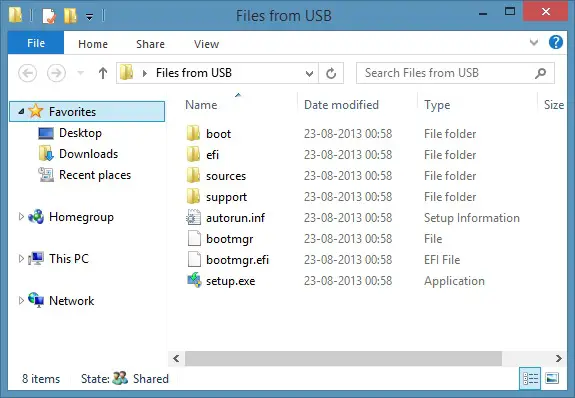Boot files are Files needed to boot (start) an operating system on a computer.
What are Boot Files?
Boot Files are files needed to boot an operating system on a computer. Each operating system has its own set of boot files needed to locate, load, and initialize the operating system during the boot sequence.

When the Windows OS is first installed, certain files are placed on the hard drive that are required to be there in order for the operating system to load, whether in Normal Mode or Safe Mode.
For example, Windows XP requires that NTLDR, among other boot files, be loaded from the volume boot record before the OS can start. Newer versions of Windows need BOOTMGR, Winload.exe, and others.
When one or more of these boot files are missing, it’s common to have a hiccup during startup, where you normally see some kind of error related to the missing file, like “BOOTMGR is missing.”
For example, the MS-DOS and Microsoft Windows 3.x platforms use the hidden files io.sys and msdos.sys and the file command.com. Configuration information stored in the text files config.sys and autoexec.bat is also used during the process. On Windows 95 and Windows 98 platforms, the files used are io.sys, msdos.sys, and win.com, with the files config.sys and autoexec.bat used optionally to support legacy hardware.
The files needed to boot the Windows NT and Windows 2000 operating systems vary depending on whether the x86 platform or the Alpha platform is used. For example, for Windows NT on the x86 platform, the boot files include the following:
- boot.ini
- bootsect.dos
- hal.dll
- ntdetect.com
- ntbootdd.sys
- ntldr
- ntoskrnl.exe
The boot sequence also uses various device drivers and the system hive.
Windows 7 and Windows Vista Boot Files
Windows 7 and Windows Vista utilize four boot files, and you will need an understanding of all four of them for the A+ Certification exams. The four boot files for Windows 7 and Vista are:
Windows 7 and Windows Vista utilize four boot files, and you will need an understanding of all four of them for the A+ Certification exams. The four boot files for Windows 7 and Vista are:
- bootmgr: Operating system loader code; similar to ntldr in previous versions of Windows
- Boot Configuration Database (BCD): Builds the operating system selection menu; similar to boot.ini in Windows XP, but data resides in the BCD store. You can edit the boot configuration data with the bcdedit utility.
- winload.exe: Loads the Vista operating system if selected from the operating system selection menu provided by BCD
- winresume.exe: Resumes the Vista operating system if the system is started from a hibernate state
Windows 10 installation media
You can download the Windows 10 Installation Media from Microsoft website but you need to have a license to install it. Download tool now!
How to boot without any operating system
If you want to start your computer just to check if everything is working properly on your computer there is this one free great tool: Hiren’s Boot CD.
Hiren’s BootCD PE (Preinstallation Environment) is a restored edition of Hiren’s BootCD based on Windows 10 PE x64. Since there are no official updates after November 2012, PE version is being developed by Hiren’s BootCD fans. It includes the least, best and updated free tools used in Hiren’s BootCD. It is being developed for the new age computers, it supports UEFI booting and requires a minimum of 2 GB RAM.
With the useful tools inside of the ISO, you can solve many problems related to your computer. It does not contain any pirated software, it includes only free and legal software.
Check the instructions and download the free tools here.